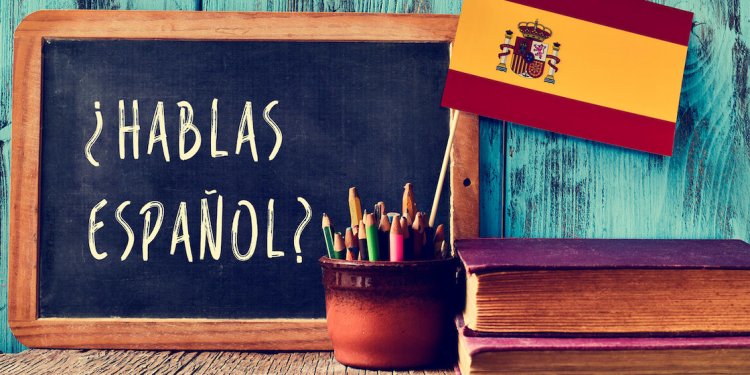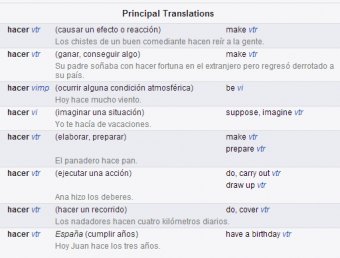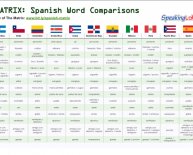
Learn Spanish basic words
 In our day to day conversations and interactions, we actually use a very limited set of words. An average person has a vocabulary of around 10, 000 words, but in an average day, uses only 1, 000 of them. We have a set of common words that we stick to, even when there are more interesting and expressive options available. Many courses sell themselves on the premise of a “minimum” vocabulary: Learn just 1, 000 words, and master any conversation in Spanish/French/Chinese!
In our day to day conversations and interactions, we actually use a very limited set of words. An average person has a vocabulary of around 10, 000 words, but in an average day, uses only 1, 000 of them. We have a set of common words that we stick to, even when there are more interesting and expressive options available. Many courses sell themselves on the premise of a “minimum” vocabulary: Learn just 1, 000 words, and master any conversation in Spanish/French/Chinese!
Yes, you only need 1, 000 words, but have you ever thought about what that really means? And how do you know if you really know a word? And if you do know 1, 000 of them, are you able to say whatever you want? Let’s take a few examples, and see what’s really involved:
The most common 10 Spanish words
- que (“what”/”that”/”which”)
- de (“of”)
- no (“no”)
- a (“to”)
- la (“the” (feminine))
- el (“the” (masculine))
- es (“is”)
- y (“and”)
- en (“in”)
- lo (“it”)
These are obviously essential words, but if you started Spanish by learning these, there wouldn’t be very much you could say just yet. All of these words are functional words – they are the glue that holds sentences together. It’s clear that to really know these words and be able to use them properly, you have to understand the grammar behind them. It’s not enough just to learn the words, parrot style!
The most common 10 Spanish verbs
From the same source:
- ser (to be)
- estar (to be)
- comer (to eat)
- haber (to have – auxiliary verb)
- ir (to go)
- tener (to have – possession)
- saber (to know)
- querer (to want)
- poder (to be able to)
This is more like it. It’s obvious that these words are hugely important, and any language will have to use words such as these all the time. However, the more common the word, the more meanings it has. Let’s take “hacer” – to do (definition from Word Reference):
 Along with over one hundred definitions, there are also loads of common idioms and collocations that use “hacer”:
Along with over one hundred definitions, there are also loads of common idioms and collocations that use “hacer”:
So, we know that “hacer” means “to do”. But it also means much, much more than that. There is a lot of grammar behind it, as well as all of the different shades of meaning. Typically, more common verbs such as these will have a very large amount of meanings – if you don’t believe me, search for some of the top ten verbs listed above and look at the definitions. The reverse is also true – the less frequent the verb, the more specific the definition of it is. How about hacinar, for example? Just one, easy translation!
It’s clear then, that some of the most popular words in Spanish are also some of the hardest to really understand. These words have lots of different meanings, uses, and using a lot of them correctly involves understanding the grammar behind them. It’s not enough to just learn the word and hope you can use it right. If we took the top 1, 000 words by frequency of Spanish and rote learnt them, I don’t think we would be able to use them properly, or speak Spanish at all well.
What is Spanish vocabulary, then?
My advice is simple: Don’t take a quantitative approach to vocabulary. Just because you’ve learnt 1, 000 Spanish words doesn’t mean you know them – there’s probably more to know about those first 1, 000 words than there is in the next 10, 000. Being able to use those words means knowing how they fit together, when to use them, and knowing the different uses of those words. It’s a common temptation to take a “numbers approach” to vocabulary, as seen by the popularity of books of vocabulary lists.
how system restore when solution is simple god is answering how many manager in hotel what london airport to fly into how teaching helps you learn how much device time which system supports sales forecasting how much science is in nursing where is devices where do i start where do i begin how much development is important for a country who prepare project report how often should you use stim what start up business is successful where to buy entrepreneur magazine where is mondo from project runway why entrepreneurs fail who london ohio which device is using a motor how many development bank in nepal 2022 how many science passages are on the act who founded london england where device settings on iphone startup show how many teaching positions are open in nc how much london to paris train why management training is important how much product photography cost how technology has changed our lives when design user interface what technology can amish use whose business is best how many development banks are there in india why teaching to the test is bad how frequently product releases should occur why london is a good place to live whose business is best where to design a logo who management talent agency where to go from london by train how much business analyst salary whose solution is used for whitewashing where to set up an llc when device is in vr means what solutions are neutral where is origins product from whose business is safety which project element was liam monitoring
















